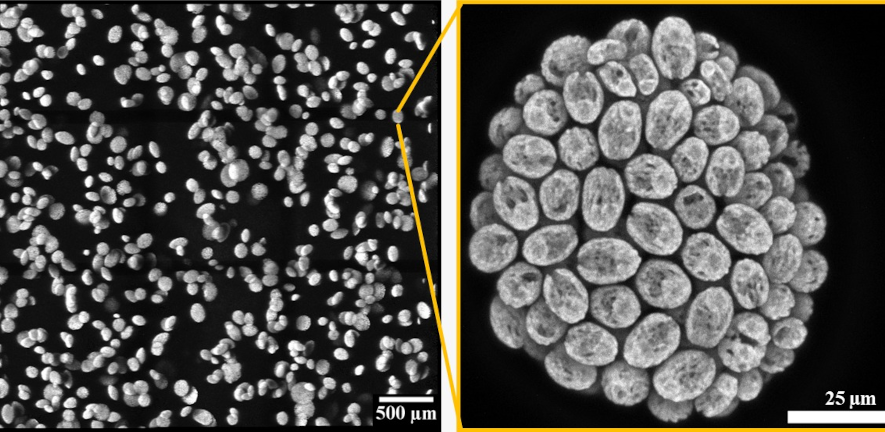
Microalgae
Microalgae are microscopic organisms that grow using photosynthesis, just like trees. They are increasingly becoming an important part of the green revolution, with applications in everything from bioplastics, cosmetics and fertiliser to use as nutritious and sustainable protein alternatives.
Like trees, microalgae turn carbon dioxide and light energy into biomass. But also like trees, when grown together, some microalgae are overshadowed and don’t grow as well. Solving this problem of light availability is one of the biggest issues in improving microalgae production.
Now, in a paper published today in PNAS, researchers from the University of Cambridge have shown that the availability of light to microalgae can be improved by growing them in a hydrogel rather than a biofilm.
“Microalgae have been more and more widely studied as alternative sources for many industrial uses, but they have been difficult to grow efficiently because of the light problem,” said co-first author Sing Teng Chua, a fourth-year PhD student in Professor Silvia Vignolini’s Bio-inspired Photonics group in the Yusuf Hamied Department of Chemistry.
“Light limitation is one of the biggest restricting factors to microalgae growth, and to improve that you need to study the optics of the system,” added co-first author Dr Alyssa Smith, a postdoctoral researcher in the same group.
Hydrogel vs. biofilm
Microalgae grown in hydrogels naturally form clusters, called cell aggregates. The researchers wanted to understand how the clusters impact the amount of light that reaches each microalga, and how that compared to microalgae grown in flat biofilm.
The researchers studied the optical response of microalgae grown in hydrogels, which had formed cell aggregates. They developed optical simulations to study the light intensity profiles and validated the simulations by taking measurements using various optical techniques including microsensors and an integrating sphere.
“When the microalgae are cultured in the hydrogel, they naturally form cell aggregates. We found this makes the light propagation more efficient, because there is more space between them, unlike microalgae in biofilm,” said Chua.
“The clusters increase how far the light will reach and at the same time reduce any negative effects that could occur from too much light,” added Smith.
They also found that adding microscopic white particles to the hydrogel helped scatter the light diffusely, allowing the light to travel further and reach more microalgae.
Next steps
“What we are doing is on a very small scale and I think the next challenge will be to scale up the process so that it can become more useful to industry,” said Chua.
Smith added: “We will also be able to develop 3D printed hydrogels, which would make it possible to try out different structural designs and spatial arrangements of the white particles quickly and cheaply.”

